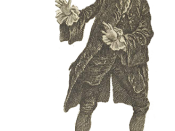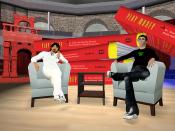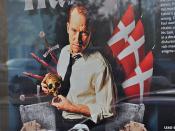Both plays introduce the main characters Antonio and Hamlet as melancholic, a psychological disharmony seen throughout both plays. Antonio precise melancholy is never established, but it can be taken as a premonition of the suffering he endures in the course of the play. He lacks interest in romance and although his foreign investments establish him as a prosperous merchant, he seems to almost welcome his unhappiness. Hamlet melancholy is understandable at the beginning of the play since it is due to the death of his father and the speedy marriage of his mother to his uncle. Throughout the play, we watch the gradual crumbling of the beliefs on which Hamlet's worldview has been based. In the first Act Scene II already, in this first soliloquy, religion has failed him, and his warped family situation can offer him no solace. In the first ghost scene, Hamlet does not know whether the ghost is his fathers spirit or an evil demon to tempt his toward destruction.
This uncertainty about the spiritual world lead Hamlet to wrenching considerations of moral truth. These considerations have already been raised by Hamlets desire to kill himself in Act I, scene II. In act III, scene III, his moral and religious beliefs seem to affect his decision to act but this view is completely opposed when he completely oversteps the bounds of Christian morality in trying to damn Claudius's soul as well as kill him when he decides not to kill Claudius while he is praying. Here Hamlets mental state of turmoil is very apparent. Also, Hamlets rash, murderous action in stabbing Polonius is an important illustration of his instability to coordinate his thoughts and actions. In his passive, thoughtful mode, Hamlet is too beset by moral considerations and uncertainties to avenge his father's death by...


